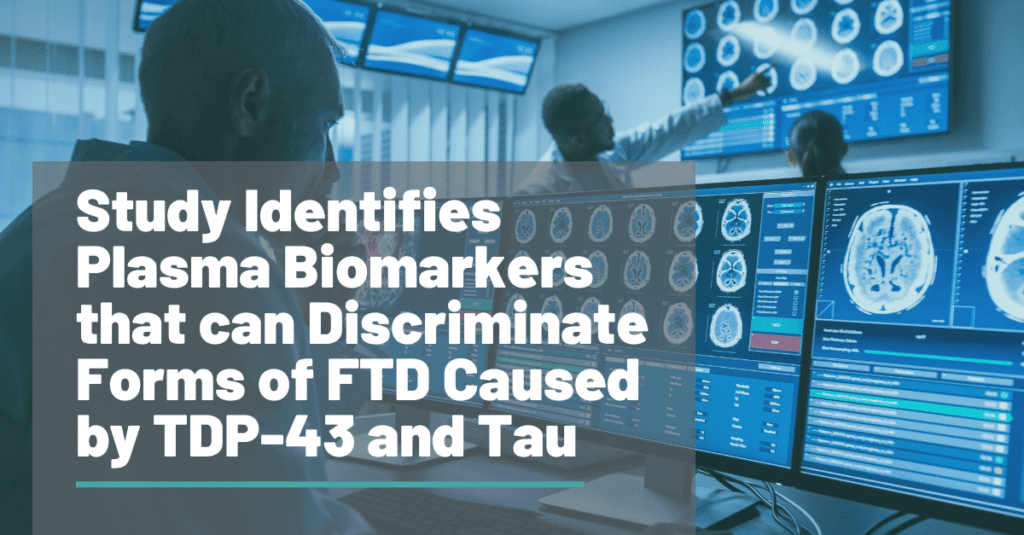Study Identifies Plasma Biomarkers That Can Discriminate Forms of FTD Caused by TDP-43 and Tau

A recent study by a team of researchers at the University of Pennsylvania has identified biomarkers that can be used to discriminate between forms of FTD caused by the abnormal accumulation of the TDP-43 or tau proteins.
Because FTD disorders share certain symptoms, diagnosing the correct subtype can be challenging for medical professionals. While some forms of FTD are known to be strongly correlated with TDP-43 and tau, many others are harder to attribute, further adding to the difficulty.
The Penn researchers evaluated two potential biomarkers to address the difficulty facing diagnosis of sporadic cases and distinguishing FTD-TDP from FTD-tau; glial fibrillary acidic protein (GFAP), a protein found in the non-neuronal (glial) cells of the nervous system, and neurofilament light chains (NfL), a protein that provides structure and support to axons in in nerve cells.
The researchers found that the ratio of GFAP to NfL was capable of distinguishing between FTD-TDP and FTD-tau, especially in people whose illness was purely FTD. In testing, they found that the ratio of GFAP to NfL is a useful biomarker for distinguishing sporadic cases of FTD as being caused by TDP or tau accumulations.
The study found that NfL concentrations tended to be higher in participants with FTD-TDP than those with FTD-tau. GFAP was found in higher concentrations in participants with FTD-tau than in those with FTD-TDP.
A crucial outcome of the study is that NfL and GFAP levels can distinguish between FTD-TDP and FTD-tau while patients are still alive. It has traditionally only been possible to make this distinction through an autopsy.
The late Murray Grossman, MDCM, EdD, a founder member of AFTD’s Medical Advisory Council, was among the study’s authors.
If you would like to learn more about TDP-43, read this blog post about a study of the protein. For more about the tau protein, read this blog post about a separate study.
By Category
Our Newsletters
Stay Informed
Sign up now and stay on top of the latest with our newsletter, event alerts, and more…
